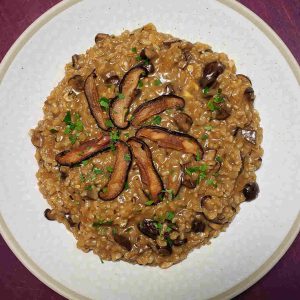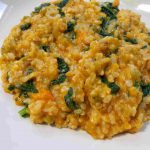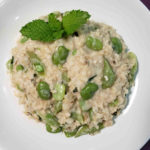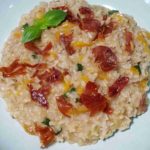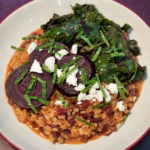A Bit About Traditional Risotto
The Rice
Risotto is a rice dish that originated in Northern Italy in x or around x century. Traditionally, it uses a high starch, short grained, white rice such as Arborio or Carnaroli. The cooking methodology coaxes the starches out of the rice, which then integrate with a cooking broth to form a creamy sauce using little or no dairy.
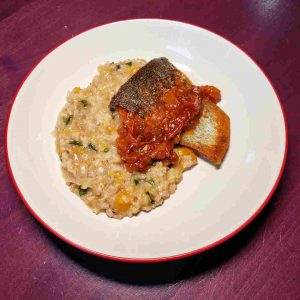
The Flavors
Risottos can be flavored in myriad ways. The classic Risotto alla Milanese delicately uses saffron and Parmesan cheese to magnificent effect. Risotto al Nero de Seppia uses squid and squid ink to produce a stunningly black colored dish that fully conveys the essence of the sea. Risotto ai Funghi is an umami rich dish which uses earthy mushrooms as the foundation. The diversity of classic risotto dishes is evidence for my classification of risotto as a “mother dish.” Any week of the year, I can visit the farmers market and find fresh seasonal ingredients which will shine in a risotto.
The Method
There is a very standard technique for preparing risotto called, as you might guess, the Risotto Method. It goes like this: In preparation for cooking the dish, a pot of broth or stock is heated to simmering. Finely diced onion is sautéed in butter or olive oil to make a simple soffritto. Other aromatics may be used to replace or complement the onion in the soffritto. Next, the rice is briefly stirred in the soffritto, surrounding each grain with a layer of seasoned oil. The pan is then deglazed with some wine. At this point stirring is constant. The wine will be absorbed into the rice, at which point a ladle full of simmering broth is added to the rice. With constant stirring, as the previous ladle of broth is absorbed into the rice, another ladle is added. This continues until the rice is al dente (to the tooth). The rice should not be mushy, nor should it be crunchy. It should be al dente. At this point the risotto is ready for finishing, which generally involves stirring grated Parmesan cheese and butter into the dish. The risotto should be rich and creamy, without the addition of cream, due to the starches that have been released from the rice. The desired final consistency, stickier or looser, is debatable. Marcella Hazan explains this as regional variation with the firmer consistency being associated with Piedmont, Lombardy and Milan, while the looser style being Venetian. The looser style is known as all’onda or “flowing in waves.”
A Bit About My Risotto
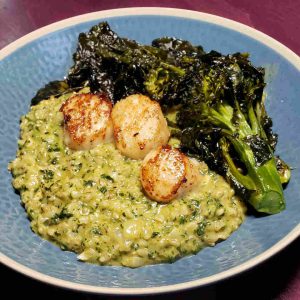
My technique for making risotto is unorthodox, bordering on sacrilegious. I use brown rice and I leverage the oven. As noted above, purists would say that brown rice is never used for risotto. They would also say that there is no place for an oven in the preparation process. For me, I’m all about whole foods. Much of rice’s nutrition and fiber is in the bran. The bran is stripped away in the processing of white rice. Beyond the nutritional value, I enjoy the nutty flavor that brown rice brings to the dish. And the oven? It replaces most of the stirring that is integral to the standard risotto method. There is a lot of stirring in the standard risotto method. There is a lot more stirring if you try to use the standard risotto method with brown rice. I speak with the voice of experience. When I tried making risotto with brown rice on the stove top, I after 45 minutes of stirring, I gave up on al dente, and we ate crunchy risotto that evening. Gentle heating in the oven substitutes for lots of stirring. Oh, and to do this right, it really requires an enameled, cast iron Dutch oven. The even heating provided by the thick cast iron and the stick resistance of the enamel are keys to success.
While I describe my method as unorthodox, I can’t claim to have thought of it on my own. If you do an internet search on “oven baked risotto” and “brown rice risotto” you will find plenty of hits. So, it’s not that corrupt of an idea. If you want to know more about how I go about making risotto using seasonal ingredients from the farmers’ market, head over to my Risotto Mother Dish Technique.

